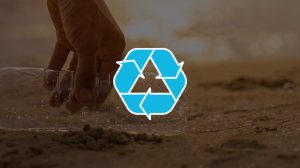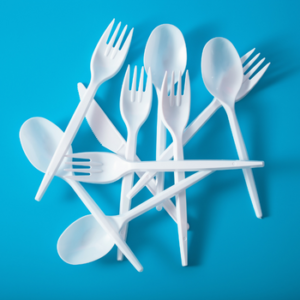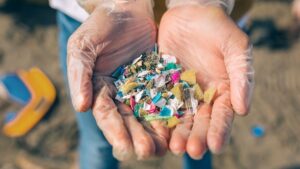Common Plastic Items Shed Trillions of Nanoparticles When Exposed to Hot Water
When you drink hot tea or coffee from a plastic cup, you could be swallowing trillions of bits of plastic so small that 1,000 of them could fit on a human hair.
That’s one concerning finding from a study published in the journal Environmental Science and Technology this month, which tested how many nanoplastics—plastic bits smaller than 0.001 millimeters in size—are released when exposed to water.
“[T]he most important finding has been the measurement of particles below 100 nm [nanometers] in water from things that people use in their everyday lives,” study co-author and National Institute of Standards and Technology (NIST) chemist Christopher Zangmeister told Treehugger in an email.
In Hot Water
The NIST-based study team wanted to see what would happen if everyday plastic items were exposed to water at increasing temperatures. While the study authors actually tested several plastics—and found that all of them released nanoplastics—they chose to focus the study on two types: food-grade nylon bags and coffee cups lined with low-density polyethylene.1 Food grade nylon is frequently used in the food industry for both wrapping and cooking food, while coffee cups are “ubiquitous,” Zangmeister explains.
They exposed the materials to water at increasing temperatures and found that they released more nanoplastics as the water warmed.1
“The number of particles released into water increase[s] rapidly with water temperature up until about 100 degrees Fahrenheit (40 degrees Celsius) and then it levels off,” Zangmeister said. “So, water temperatures between 100 degrees Fahrenheit up to boiling point water released the same number of particles in water.”
A typical cup of coffee is served at between 160 and 185 degrees Fahrenheit, definitely hot enough to expose the average caffeine addict.3 And they could potentially be swallowing quite a lot. In hot water, the average coffee cup released more than a billion nanoplastic particles per milliliter.
“For reference, a small coffee cup is about 300 milliliters,” Zangmeister says. “So, that could lead to exposure to trillions of particles per cup.”
The types of nylon bags used in slow cookers released 10 times more nanoplastics than the coffee cups, meaning they could be an even greater source of exposure.



